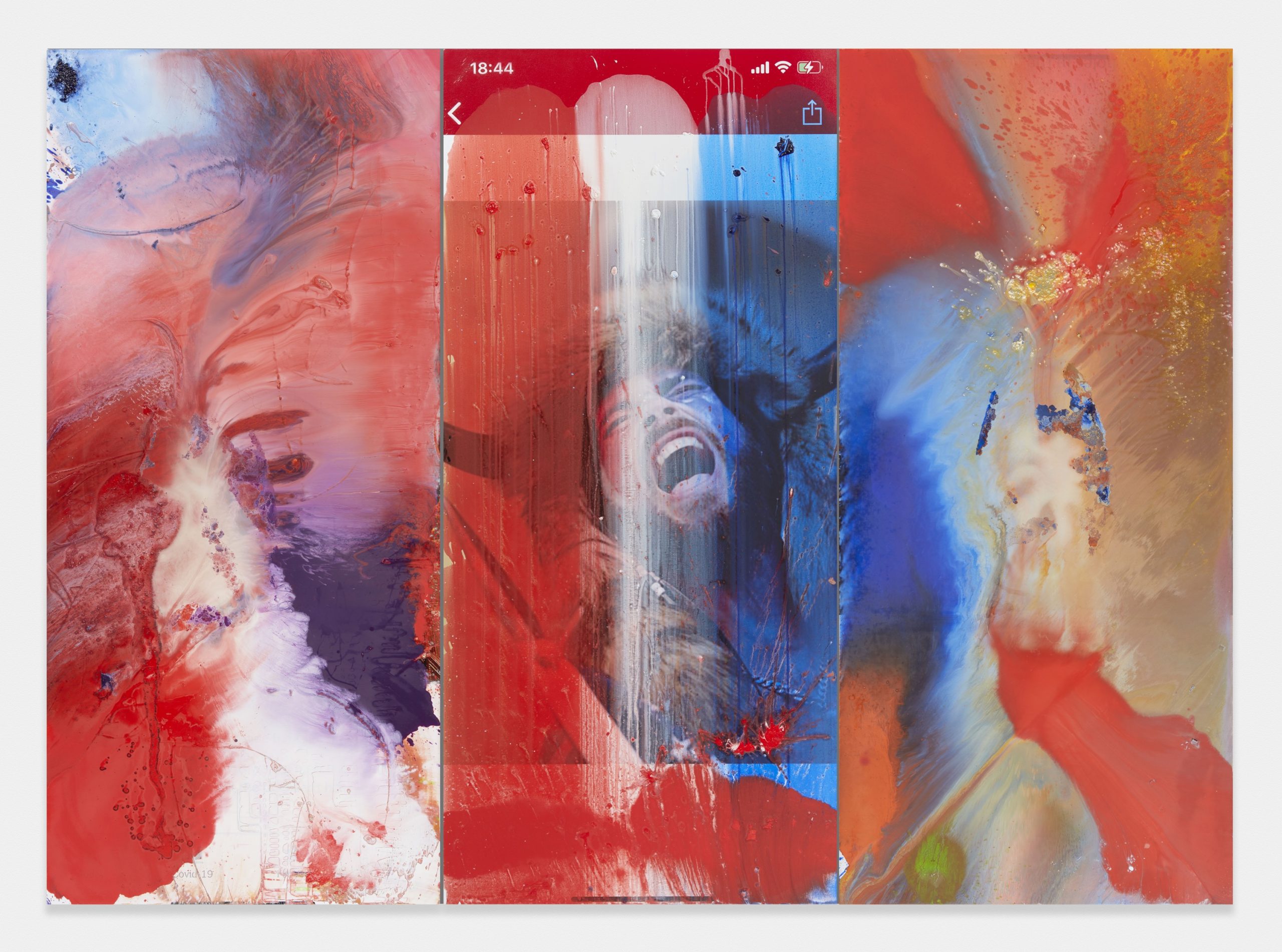
«Images of images»
HISTORYNOW AT THE ARCHAEOLOGICAL MUSEUM
At the National Archaeological Museum of Venice, you can study ancient art –the intent of the 1920s set-up ordered by periods and styles– and you can wonder about the society that produced it. From 21st April, on the occasion of the 59th International Exhibition of Contemporary Art, HISTORYNOW will propose an unprecedented juxtaposition between the images of the ancient world and those of contemporary digital communication, captured by Marc Quinn in his paintings. It will suggest reflections on the ubiquity of images and their significance for individual and collective memory, yesterday as today.
In the ancient world, images were everywhere. Works of figurative art were intended for the spaces in which one lived: paintings, statues, and relief sculptures adorned sanctuaries, squares, cemeteries, and houses. In Greece, they referred directly or indirectly, but not realistically, to concrete historical and social situations such as the celebration of victories, conferral of honours, and remembrance of the dead. Subjected to a severe cultural selection, they represented the themes and myths to which the polis conferred a high meaning and which were appropriate to the social spaces to which the work of art was intended.
Most of the solemn marbles exhibited in the vast rooms of the Archaeological Museum, overlooking St. Mark Square, are replicas of lost originals by Greek sculptors of the classical period and Hellenism. They testify to the immense passion of the Romans for Greek art, which led to the phenomenon of copies and their diffusion. Rome built an actual semantic system with Greek models. Especially between the 1st and 2nd centuries AD, the imperial workshops gave rise to the large-scale production of copies. . Thus the memory of Greek masterpieces has reached our museums, where the legacy of classical antiquity is also represented by a multitude of public and private portraits, a veritable «sea of heads.»
The Archaeological Museum of Venice is no exception and holds about a hundred of them, among which there are many effigies of emperors. In the Roman world, the diffusion of the official images of the emperors was widespread. Their portraits replicated in large numbers, thanks to court prototypes transmitted to the various provincial workshops, manifested the presence of central power throughout the Empire. Those same portraits sometimes, on the death of the tyrant, incurred the condemnation of memory –damnatio memoriae– and was destroyed in an attempt to condemn him to oblivion.
Even today, images are everywhere: their number has increased exponentially with the spread of mobile devices and new media. Unlike the images of antiquity –destined to last over time, born from shared values that made them significant and created for collective perception in public spaces or private memory in family spaces– those that appear on the screens of our mobile phones are momentary, fleeting, and enjoyed individually. And, says Marc Quinn, even when you stop them in a screenshot, following a «sudden urge to save something for sharing or remembering,» you will forget them since storing on the phone often «stops you from having to remember.»
His paintings are exactly the format of the iPhone screenshot. While the last one «captures images of images,» they «turn pixels into matter and anchor the virtual object to the real world», allowing it not to be forgotten. Therefore, they suspend the continuous flow of images by selecting some among many others. And, through the mediation of art, transform them into lasting memories. Finally, by placing his paintings in a collective public space: the museum, Quinn invites the viewer to reflect on the forms of digital communication and, at the same time, catalyses their attention on the important stories of the pandemic heroes, for example –or on what is important in the “frivolous” stories of some celebrities– as well as on issues that need to be questioned today, such as the climate change.
MDP
Quotes: M. Beard, J. Henderson, Classical Art. From Greece to Rome, Oxford 2001, p. 207; Marc Quinn in conversazione con Jefferson Hack, in HISTORYNOW, Exhibition Catalogue, Milan 2022, pp. 57-62.




